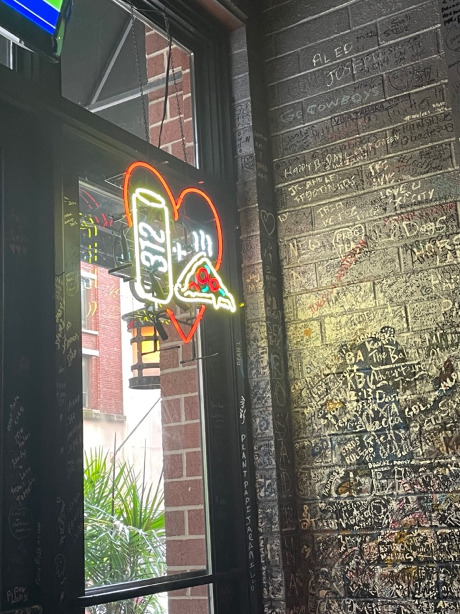Don't wanna be here? Send us removal request.
Text

In the readings for this homework assignment, I found that there was a constant theme of the feeling of inadequacy that comes from photography. In "The Age of the Instagram Face," as Jia Tolentino set out to learn more about how famous plastic surgeons "enhance" people, she was ultimately was left with "a kind of bottomless need that [she] associated with early adolescence." I think that this connects to my example above because the beauty standards that are being pushed onto people (specifically women) are outrageous and ultimately dangerous. Above are two side by side photos of Livvy Dunne (an All-American gymnast at LSU who is also very naturally beautiful). Because of the standards that are being set on social media by these celebrities who are getting cosmetic work done, Livvy has felt the need to FaceTune her photos, further reinforcing this stereotype. Just as the article by Tolentino discusses that cosmetic work is an enhancement rather than a fix for something, "Pixel Perfect," by Lauren Collins, discusses this issue with photo editing done by famous editors, specifically highlighting Pascal Dangin. In the article, Collins says that Dangin "was complicit in perpetuating unrealistic images of the human body" but Dangin argues that he is "just giving supply to the demand." Ultimately, both of these articles have an underlying tone that people who see these images are just supposed to accept the fact that they are edited and think that it is normal. I think that this idea is very dangerous and can have detrimental effects on people's perception of themselves.
2 notes
·
View notes
Text

In the reading “Book from the Ground: from point to point,” by Xu Bing, I thought a very interesting concept came up in the introduction. It states “anyone with experience in contemporary life can read it.” After reading it, I realized that the meaning that I gathered from the symbols could be vastly different from someone who has lived a different life than me. Symbols leave room for interpretation which make them a valuable asset to an author or creator depending on how they want their work to strike the reader. Words could easily be substituted for the symbols to make a clear point, but the symbols allow for the reader to interact with the piece and interpret it in their own context of life. This connects to “Reading Photographs” by Richard Salkeld where he talks about connotation and denotation. Denotation is the literal meaning of something. In the image above there is clearly a sign in a window. However, the connotative meaning of the photo is very different from person to person. The connotation that I took from the symbols that appear in the sign are that beer + pizza equals happiness. I also know from my own personal experience that the kind of pizza is Gino’s East deep dish with a goose island beer. I know this because that’s where I took the photo and 312 is part of the company name of Goose Island. People that aren’t familiar with Chicago might not have known this and could interpret the sign in their own way based on the pizza and drink they are most familiar with. Drawing from the Salkeld reading, the signatures on the wall also serve as indexical signifiers as they signify people having been there.
3 notes
·
View notes


